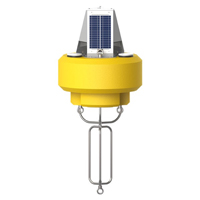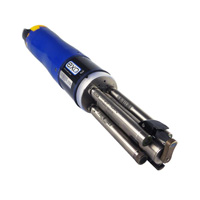Locally, people have countless reasons for monitoring nearby lakes. No matter their size, ponds and lakes are complex ecosystems. The shifting of any one parameter might affect the water quality of a lake, and that shift can be caused by one or more of any number of inputs and outputs.
Thinking about the lake itself is an essential first step in lake monitoring for water quality. This is because the lake’s qualities, uses, surroundings, geological characteristics, and other traits have a strong impact on its health. Thus, a deep understanding of the lake’s origins and the parameters that affect its health is critical to effective lake management.
Real-time lake monitoring systems allow water quality experts and lake management professionals to stay a step ahead of problems, addressing issues as they arise and water quality changes. Whether a problem is related to algal blooms, excess nutrient loading, sediment and turbidity or thermal stratification, real-time lake monitoring tools provide essential information for management.
Lake Management in Focus
Lake management might involve a great many people, applications, and disciplines, depending on the location. Management plans for a lake might include conservation of the local ecosystem, improvement of lake’s recreational offers, rehabilitation projects to improve the lake’s health and pure research into the local watershed and its species.
According to the North American Lake Management Society, managing watersheds and lakes is typically best done in “iterative steps” rather than drastic all-at-once actions. Measured steps toward a set goal are usually less costly and negatively impactful for non-targeted organisms. This isn’t always the case, and local, state and federal regulations have the final word on whether a planned lake management step is justified and appropriate.
Put simply, there is more than one way to manage a lake, and many techniques to employ. A lake’s biotic distributions, oxygen levels, nutrient content, and sediment composition can all be changed, by doing simple things like adding bacteria, harvesting plants, and removing certain fish species. In some cases, however, more complicated measures might be called for, such as controlling various hydraulic factors, dredging sediment, or lowering water levels.
It is a best practice to maintain a hydrological monitoring system before, and after any of these operations, as well as while executing them, because they all have the potential to interfere with a lake’s thermal profile.
Limnological Issues in Lake Monitoring
A great number of hydrological phenomena can reveal themselves in lakes. These complex, often interconnected phenomena demand close monitoring, although any given project may require the monitoring of only one or a few. However, even for applications that require only the monitoring of a single process or parameter benefit from a broader contextual understanding of the data—and that comes from understanding how that process or parameter fits into the lake’s overall health and affects others. To respond most rapidly and effectively it helps to monitor all lake health parameters.
No longer just a problem in agricultural regions, eutrophication and hypoxic “dead zones” are a growing problem for lakes in many areas. While nutrient loads have the greatest influence on eutrophication, temperature can also contribute to the phenomenon, and high levels of stratification put lakes at risk. Monitoring for nutrient loads, TDM, temperature, turbidity, DO levels, and stratification may be advisable in lakes with eutrophication issues.
Real-Time Lake Monitoring
For a limnological monitoring system to be effective, it must be built upon either interval-based or real-time measurements. However, real-time monitoring offers several advantages. Using telemetry and data logging instruments to record and transmit real-time lake data allows researchers and lake managers to react and plan remotely.
A lake monitoring system focused on water quality can consist of a single instrument or many, depending on the conditions of interest. At the beginning of the monitoring project, it’s important to establish a set of objectives. These objectives should guide purchasing and procurement, along with scheduling and planning.
Because lake monitoring for water quality may demand the observation and measurement of many hydrological parameters, a multi-parameter sonde is usually a smart foundation for such a project. Despite their differences, multi-parameter sondes share a few common traits. The most obvious is an array of ports for attaching probes and sensors that measure conductivity, depth level, pH and temperature. Some sondes also have built-in sensors and most contain internal memory and batteries for long deployment periods without regular upkeep. Certain sondes even have external power connectivity and a data logger, allowing them to be deployed even longer.
For lake monitoring applications, it’s typical to equip a data buoy with multi-parameter sondes and a data logger. This kind of buoy will be able to stay powered up for a long time, thanks to its battery and solar panel. However, even these setups that feature their own power sources and sondes with built-in anti-fouling measures must still be checked from time to time for problems, such as accumulation of organic matter and fouling of sensors.
Benefits of Buoy-Based Inland Lake Monitoring Systems
Although every project is different, most inland lake monitoring systems share a few features.
Measurement data is more effective when it is provided in real-time. A buoy-based monitoring system offers the most efficient and most accessible route to comprehensive, real-time measurement data, housing sensors at various depths throughout the waterway and transmitting the data securely in real-time to any computer.
Buoy systems are customizable and flexible, housing as many sensors as needed to meet a variety of limnological project requirements. They are powered via a recharging solar panel system and marine battery and operate with multiple telemetry options.
Additionally, shoreline monitoring data does not always accurately represent water quality conditions. Buoy-based systems provide a more stable temperature profiling platform with more reliable results.
Getting the Lake Monitoring Results You Need
At NexSens, we work hard to ensure that we’re helping every customer design, create, and deploy the best solution at the right time. We understand how important your water quality data is, and we build our lake monitoring systems to be reliable, accurate, and durable. Speak to us today about your lake monitoring or water quality project, or find out more about recommended equipment and lake monitoring applications here.
Equipment
The NexSens CB-450 Data Buoy is designed for deployment in lakes, rivers, coastal waters, harbors, estuaries and other freshwater or marine environments.
EXO3 is a purpose-built sonde for monitoring major water quality parameters, including: pH, conductivity, temperature, turbidity and dissolved oxygen.
WQData LIVE is a web-based project management service that allows users 24/7 instant access to data collected from remote telemetry systems.





0 comments